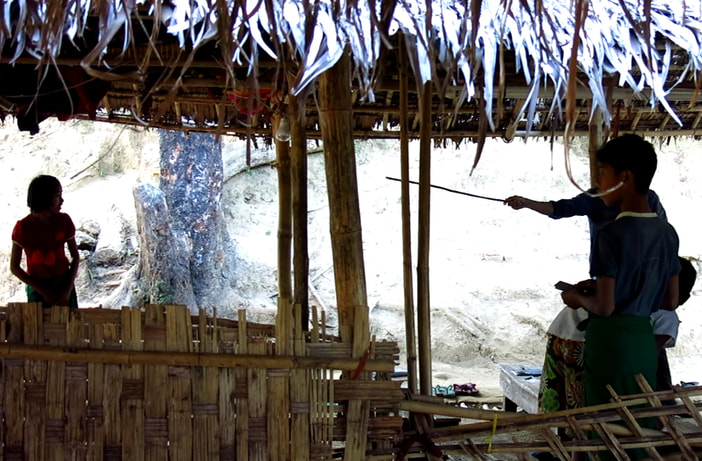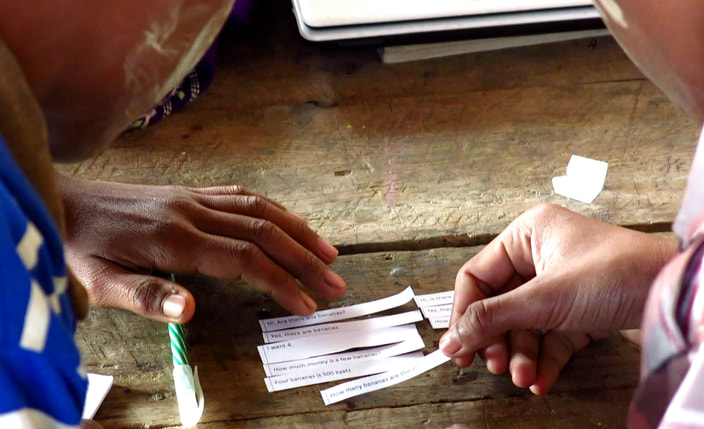|
The volunteer teachers for the most part do not want to teach. They often follow the government textbook, stand dead centre, and brandish a stick. There is no engagement; from them or their students. They are coming to the training class which is active and student-based, but they don’t seem to consider that they might apply that same method to their own lessons. Most of them are young; in that middling stage between being told what they must do and realizing what they want to or could do. During my Sunday session I asked questions about their teaching; what had they taught in the previous week and had they planned it? How did they know how far through the chapter they could get in the hour and a half of teaching time? Doing this at all is tough for them, especially in a second language. However, the 5 students who are also teaching were not unwilling in giving their answers once they understood. They have never before had to answer such difficult questions though, and many simply did not have answers. I learnt how many pages they cover in a class; I was unable to ascertain if they plan this number beforehand. It might be that they know the number of pages from their predecessor who taught that same course in the previous year, or it might be that they just start on page 1 and bumble through as much as they can, basing the pace of the upcoming lessons on the former. They never talk to one another about their classes. One student helpfully proffered the wisdom ‘failing to plan is planning to fail.’ There appears to be a lack of connection though between these rousing phrases and real life. It strikes me that they might believe it is enough to read proverbs and sayings as though it will become reality by osmosis of some kind. As usual, the topic of punishment came about. Ever since I arrived in Myanmar, I have been all too keenly aware that caning the children is common practice. Brandishing it menacingly is even more normal than using it to strike an unruly child. My trainee does not use a cane. Fortunately; it would have been the first thing to be removed under our training program of child-friendly learning! He does however express frustration and desire to hit the children into submission. I responded to this admission by stating that learning should be autonomous; the teacher already knows the material. If the majority of students are disengaged, the teacher needs to re-assess his or her teaching style. If one or two students are troublesome, they should be given a choice. They generally carry outside issues into the classroom and sometimes they might not be in a learning mood. The treatment of children as machines here is apparent. If they go wrong, hit them until they start again. My mother applied the same logic to our printer which had a ruler jammed into it’s paper feed when I was 12. One teacher felt very much that hitting was the only way to discipline. Especially wayward boys. However, much to my delight, another maintained that talking was a better solution. Personally, I considered simply removing all of the canes from the classrooms in the dead of night. However, makeshift implements would be fashioned and simply removing the cane will not change the culture that hitting is inherently good and corrects bad behaviors.
We need to overhaul the teaching and learning culture which is broadly based on the British system of over 100 years ago; set up to control, and discipline masses of people. We no longer live in a world where educating masses to read and write is sufficient. We need teachers to talk to one another. We need to lead people to work as a team and think independently after having sought advice for unseen problems. We need to encourage people to solve problems by adapting previous methodologies that they have used in other situations. Chloe Smith NEH Coordinator and Teacher Trainer Related Posts: Photo Essay: Teaching Thoughtfully Rakhine Teacher Training in Yangon Guest Response | Using Home Language in English Class Sittwe Teacher Training Teacher Training Practicals in Yangon Comparing Teacher Trainings
Comments
|
This section will not be visible in live published website. Below are your current settings: Current Number Of Columns are = 3 Expand Posts Area = 1 Gap/Space Between Posts = 20px Blog Post Style = card Use of custom card colors instead of default colors = Blog Post Card Background Color = current color Blog Post Card Shadow Color = current color Blog Post Card Border Color = current color Publish the website and visit your blog page to see the results |
|
© New Education Highway 2024
Except where otherwise noted, content on this site is licensed under a Creative Commons Attribution 4.0 International License. |





